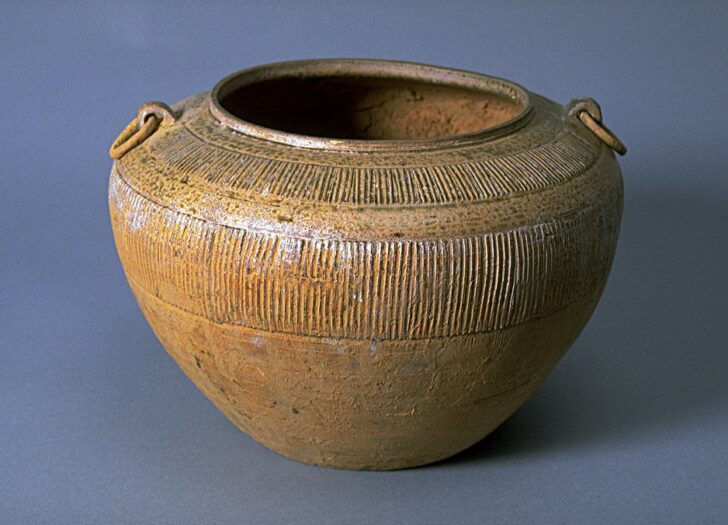Jar
Chinese

Description
5. Globular jar with ring handles
China, Zhejiang province, Eastern Zhou dynasty, 771–256 bce
6th–4th centuries bce
Stoneware with carved and stamped decoration under olive green glaze
Gift of Domino’s Pizza, Inc., 1993/1.93
Bronze vessels were the weapon of choice for lavish displays of wealth among the ambitious warlords and nobles of the feudal Warring States period. Potters were often called upon to help make ceramic molds of intricate designs that were then translated into bronze. Yet as soon as new shapes or designs appeared in bronze, they were copied back into pottery, particularly for burial as funerary gifts. The handles that simulate metal rings, the smooth taut form of the jar, and the wide bands of incised rib patterns on the upper body all contribute to the appearance of hard and concise metalwork in this pottery vessel.
Subject Matter:
The bronze prototype for this stately jar is probably a form known as guan (罐) , which was popular throughout the Zhou dynasty. The ring handles, incised and impressed decoration, and olive green glaze emulate bronze vessels that were popular and much more expensive than ceramics.
A light coating of accidental ash olive glaze dusts the shoulder of the stoneware, sometimes referred to as proto-porcelain, which was fired to temperatures of around 1100 degrees Celsius. During the Warring States Period, many glazed proto-porcelain vessels were made as less-expensive, yet just as impressive, alternative to bronze vessels.
Physical Description:
A globular, wide-mouthed jar with two bands of incised and impressed rib-pattern decoration, and two lug handles holding loose rings on the shoulder. A light coating of olive-green glaze covers the top and shoulder.
Usage Rights:
If you are interested in using an image for a publication, please visit https://umma.umich.edu/request-image/ for more information and to fill out the online Image Rights and Reproductions Request Form.